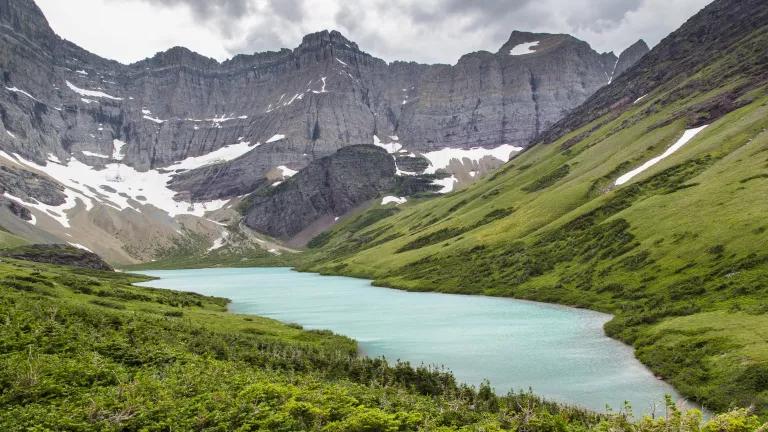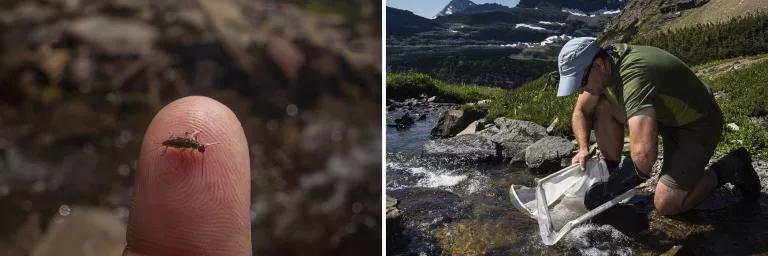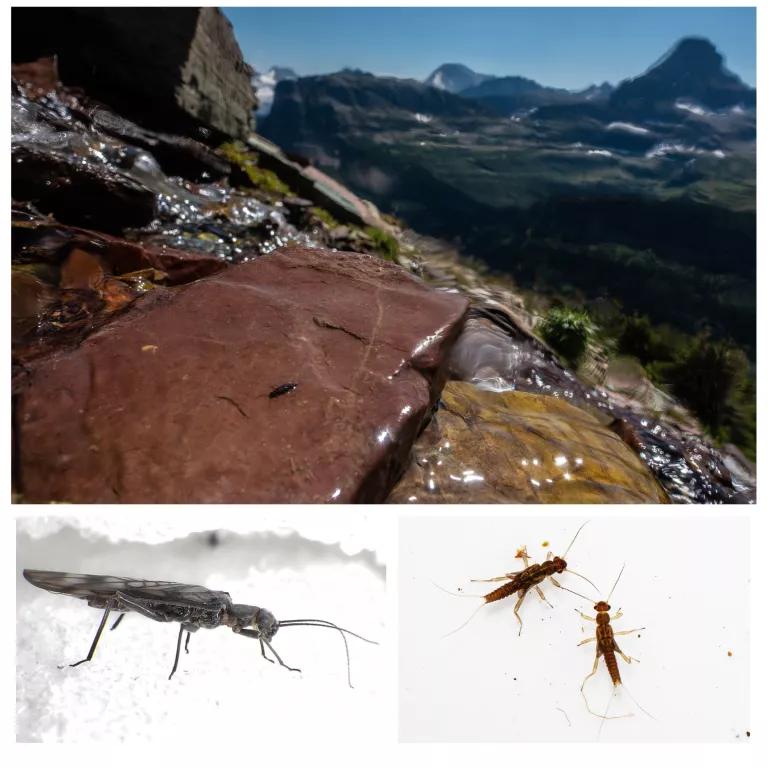In Glacier National Park, Ice Isn't the Only Thing That's Disappearing
Two species of tiny stonefly have been added to the Endangered Species List because their habitat is expected to melt by 2030.

Cracker Lake, Glacier National Park, Montana
High up in the mountains of Montana’s Glacier National Park, there are two species of insect that only a fly fishermen or entomologist would probably recognize. Known as stoneflies, these aquatic bugs are similar to dragonflies and mayflies in that they spend part of their lives underwater before emerging onto the land, where they transform into winged adults less than a half inch long. However, unlike those other species, stoneflies do their thing only where cold, clean waters flow.
In fact, these flies live pretty much exclusively downstream from glaciers, snowfields, and frigid alpine springs, and they have evolved a nifty suite of antifreeze compounds to make it all possible. It’s a pretty cool trick—one that has helped the insects survive for hundreds of millions of years in frigid conditions that have sent others packing. But what makes these insects special may also be their undoing—and soon.
In November, the U.S. Fish and Wildlife Service added the western glacier stonefly (Zapada glacier) and the meltwater lednian stonefly (Lednia tumana) to the Endangered Species List, both under the designation of threatened. And while the two species are extremely sensitive to pollution, as all stoneflies are, another very significant risk factor is what triggered the listing.
“All of the glaciers in Glacier National Park are expected to be gone by 2030,” says Noah Greenwald, director of endangered species for the Center for Biological Diversity (CBD). Like, all of them all of them. Ten years from now. And without giant chunks of ice to chill their streams and supply life-sustaining meltwater, the stoneflies cannot exist.
“In 1900, there were 150 glaciers in Glacier National Park,” says Greenwald. “There are now 25.”
According to the U.S. Geological Survey, the disappearance of the park’s glaciers could also bring more wildfires to the region and negatively affect native trout species, which have also evolved to live in cold water. But climate change cometh first for the stoneflies, and that right soon.

How, you may wonder, would an Endangered Species Act listing help these seemingly doomed species?
Well, the act would have previously required the FWS to designate critical habitat for the stoneflies. But the Trump administration announced changes this summer that allow the agency to opt out of declaring critical habitat in cases when “it may not be prudent”—as the FWS phrased it in the stoneflies’ entry into the Federal Register. Cases, ahem, linked to climate change, for instance.
This is akin to saying climate change is a problem without a solution. But there is a scientific solution, of course. We need to cut carbon emissions. As much and as quickly as possible. The fact that the Trump administration hasn’t made any meaningful effort to do so does not mean that it is impossible by definition. Or that we should simply give up on the stoneflies and their habitat, and so, so much more.
The CBD and the Xerces Society for Invertebrate Conservation have been petitioning for the western glacier stonefly’s listing since 2010, and WildEarth Guardians has been pushing for federal protections for the meltwater lednian stonefly since 2007. And while the non-designation of critical habitat is disappointing, Greenwald says the FWS still must develop a recovery plan for both species, though it’s unclear at this stage what that will look like. But the listings are important for another reason as well.

“Listing provides information to people,” says Greenwald. “Really, it raises the alarm bells in terms of climate change.”
Of course, the stoneflies themselves have a stake in all of this too. Every species has an inherent right to exist, and what’s more, their loss would ripple throughout the ecosystems they inhabit. Stonefly nymphs shred leaf material and other aquatic detritus, which helps unlock nutrients and facilitates their spread throughout the ecosystem. Stoneflies also serve as yummy snacks for amphibians, other insects, and the trout that fishermen lust after. And after the adults emerge from their cool waters to breed, they die, providing yet another buffet for other critters. In short, stoneflies are a critical base layer of the local food web.
In the end, the real story of the stoneflies is one of urgency. The extinctions and other climate-fueled changes scientists keep warning us about aren’t like some far-off, Nostradamus predictions. They’ll be here before we know it. In fact, we are already watching them unfold.
“I think for anyone out there who’s really doubting how rapidly our world is changing, how serious the threat climate change is, they should pay attention to these stoneflies,” says Greenwald.
This article was originally published on onEarth, which is no longer in publication. onEarth was founded in 1979 as the Amicus Journal, an independent magazine of thought and opinion on the environment. All opinions expressed are those of the authors and do not necessarily reflect the policies or positions of NRDC. This article is available for online republication by news media outlets or nonprofits under these conditions: The writer(s) must be credited with a byline; you must note prominently that the article was originally published by NRDC.org and link to the original; the article cannot be edited (beyond simple things such grammar); you can’t resell the article in any form or grant republishing rights to other outlets; you can’t republish our material wholesale or automatically—you need to select articles individually; you can’t republish the photos or graphics on our site without specific permission; you should drop us a note to let us know when you’ve used one of our articles.

Looking for Climate Connections (and Berries) Through Traditional Indigenous Knowledge
What Is the Keystone XL Pipeline?
How to Make an Effective Public Comment